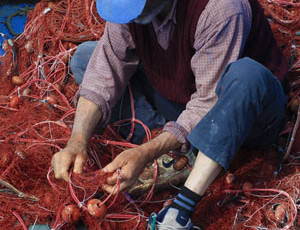Diving Panarea
The whole Aeolian coastal area has landscapes of an extraordinary beauty and uniqueness, but the sea of Panarea stands out for the presence of these islands: Basiluzzo, Bottaro, Dattilo, Lisca Bianca and Lisca Nera which, together with the island form a stand-alone archipelago situated upon the unique volcanic complex, the real paradise for the scuba-divers. The Panarea coasts, beyond being the demonstration of the powerful volcanic nature of the place, collect in a short stretch of sea numerous peculiarities which make the discover of this small archipelago between Lipari and Stromboli a continuous emotion, which vary from one immersion to another.
La Nave rock
Difficulty: medium
Depth: 10-32m
Current: media
Visibility: excellent
The immersion, situated on the north-west of Panarea, in correspondence of the La Nave Rock, starts with the descent of the stack’s vertical wall, and the observation of colourful sponges, astroides, and algae which create a perfect habitat for the colonies of parrotfishes; moreover, in the wall’s gaps octopus and morays nestle. The immersion continues with the discover of the basement, where the seabed is composed of big stones, used as a shelter of groupers and Linnaeus, the Spinazzola rock.
The rock Spinazzola
Difficulty: Easy
Depth: 0-45m
Current: Low
Visibility: excellent
Next to Basiluzzo, on the western side between the Spinazzola and Basiluzzo rocks, the immersion begins. At circa 10 metres of depth, on the rocky plateau you can see a collapsed zone, where some meter deeper a bleak aspect is transformed into an explosion of colours, thanks to the presence of astoides, colourful sponges, gorgonians, orange madreporaria (scleractinia), and starfishes who populate the white wall of the monolith. Between the gaps of the vertical wall it is not difficult to see octopus, morays and redfish, while the basement, at 45 metres depth, is made of a stretch of big boulders, an ideal habitat for groupers and Linnaeus.
The shipwreck of Lisca Bianca
Difficulty: high
Depth: 25-42m
Current: media
Visibility: excellent
The sea of the Aeolian Islands keeps countless relics. Unfortunately few of them are reachable because of the prohibitive depths where they lie, and because of the archaeological obligations which ban any visit. One which can be visited is the Llanishen relic, British steam merchant ship wrecked in the last years of the 19th century after it clashed against the rocks of Lisca Nera. The wreck lies on the seabed of circa 30-40 meters in navigation position, in way to make it visible in its entirety yet from the top. Unfortunately the hull is in a very bad condition of conservation; the wooden parts are quite totally absent, and the part of sheets which constituted the bow are now ruined. The better conserved part of the relic is the stern where you can perfectly distinguish the helm and the propeller, now partly covered up with sand. The relic is populated by groupers, breams, morays, castagnole, spirographs and starfishes.





